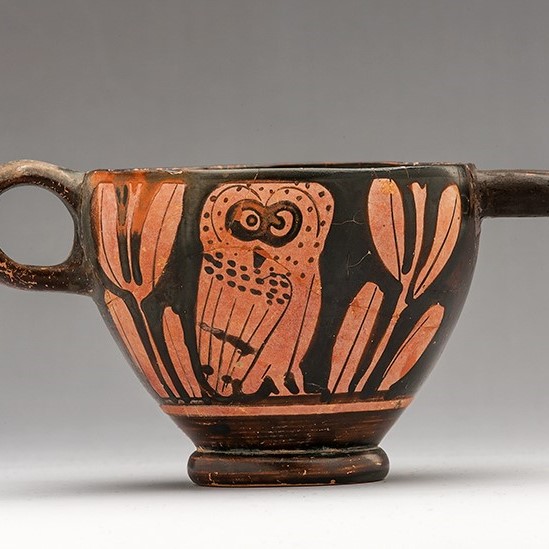
Artefact or object:
Description:
Attic Red-Figure Pottery
Introduction by J.R. Green
There is a sense in which the red-figure technique is the reverse of black-figure inasmuch as the figures are now reserved on the orange-red clay and the glaze applied around the background. One advantage of the new technique is that the internal lines, for drapery, bodies and so on, were painted rather than incised and so these details were at once clearer and more fluid, an important factor for painters seeking more convincing three-dimensional representation. Furthermore, the quality of internal line soon came to be varied, with dilute glaze used for minor elements such as musculature. Many aspects of the technique such as the use of relief line and relief contour as well as preliminary sketching of the figures can be seen on the column-krater 1964.01.
The red-figure technique was invented in Athens about 530 BC and continued to be used for a little over two centuries. In the later sixth and fifth centuries the Athenian pottery industry reached its acme and a large percentage of red-figure was exported, particularly to Etruria and South Italy. In the fourth century, however, neither the quality of the work nor the range of export matched that of the fifth century, and, with the exception of the market in the colonies of the Black Sea and to some extent in the Levant and in Spain, Athenian red-figure pottery was mostly made for home consumption.
The basis for any detailed study must be Beazley’s lists of attributed vases in J.D. Beazley, Attic Red-Figure Vase-Painters (2nd ed., Oxford 1963) (with additions in J.D. Beazley, Paralipomena: Additions to Attic Black-Figure Vase-Painters and to Attic Red-Figure Vase-Painters (Oxford 1971) and T.H. Carpenter, et al., Beazley Addenda: Additional References to ABV, ARV2 & Paralipomena (2nd ed., Oxford 1989): see also the introduction in this catalogue to Attic Black-Figure Pottery). J. Boardman gives a good survey in Athenian Red-Figure Vases: The Archaic Period (London 1975) and Athenian Red-Figure Vases: The Classical Period (London 1989). It is also worth consulting the relevant sections in M. Robertson’s Greek Painting (Geneva 1959); the same author’s The Art of Vase-Painting in Classical Athens (Cambridge 1992) is a magisterial and at the same time sympathetic study.